Behind the Portman Sculpture
Mr. Portman was a renowned international architect and a sculptor, painter, and furniture designer. His artwork can be spotted at the focal point of many of Portman’s built projects. They are the “eyes” of a dragon.
I was fortunate to work closely with him on many sculptures. The below are the stories behind those collaborations. Near the end of designing Zhejiang Fortune Finance Center, Mr. Portman showed me a hand sketch of a lotus flower set sitting on twin pylons at the center of the plaza and asked me to detail the sculpture with glass.
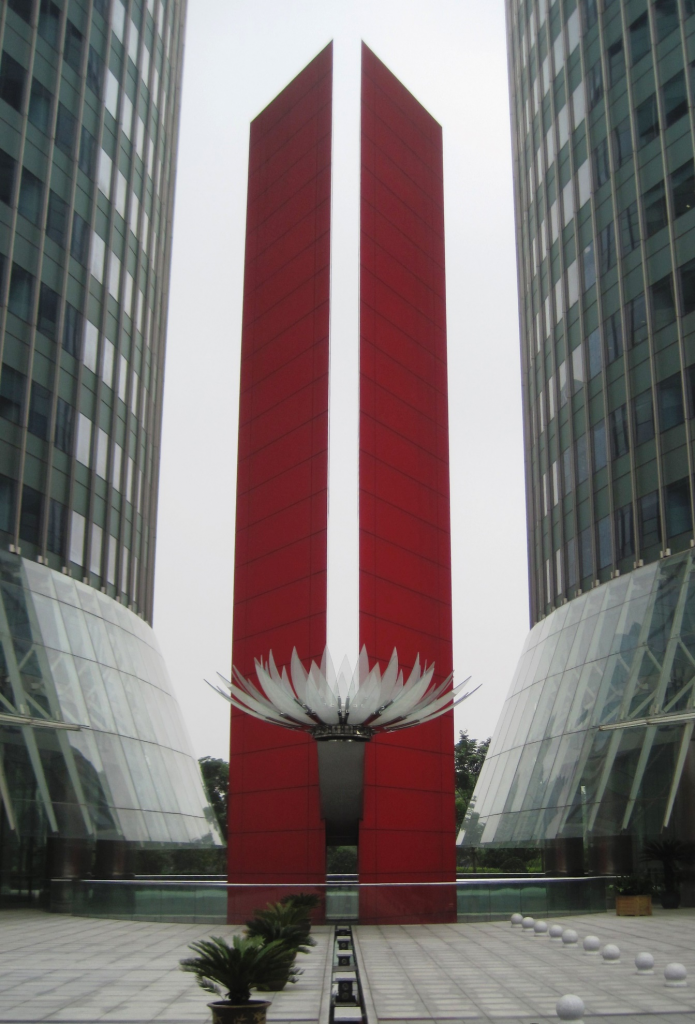
It was his very thoughtful way to acknowledge the city and the site (near Xi Lake) where this building is and to give blessing to the project. I quickly figured out designing glass petals in three sizes and curves, each held with a stainless-steel bracket and stiffener, welded onto a cylinder core to create the look of “lotus”.

Because Hangzhou is a coastal city prone to typhoons, therefore the durability of the sculpture was carefully studied in the detailed implementation phase. After consulting with the structural engineer, we came up with the idea to use 2 layers of 10mm tempered glass, laminated with an Ionoplastic interlayer, a new material stronger and better resistant to UV, to make the petal.
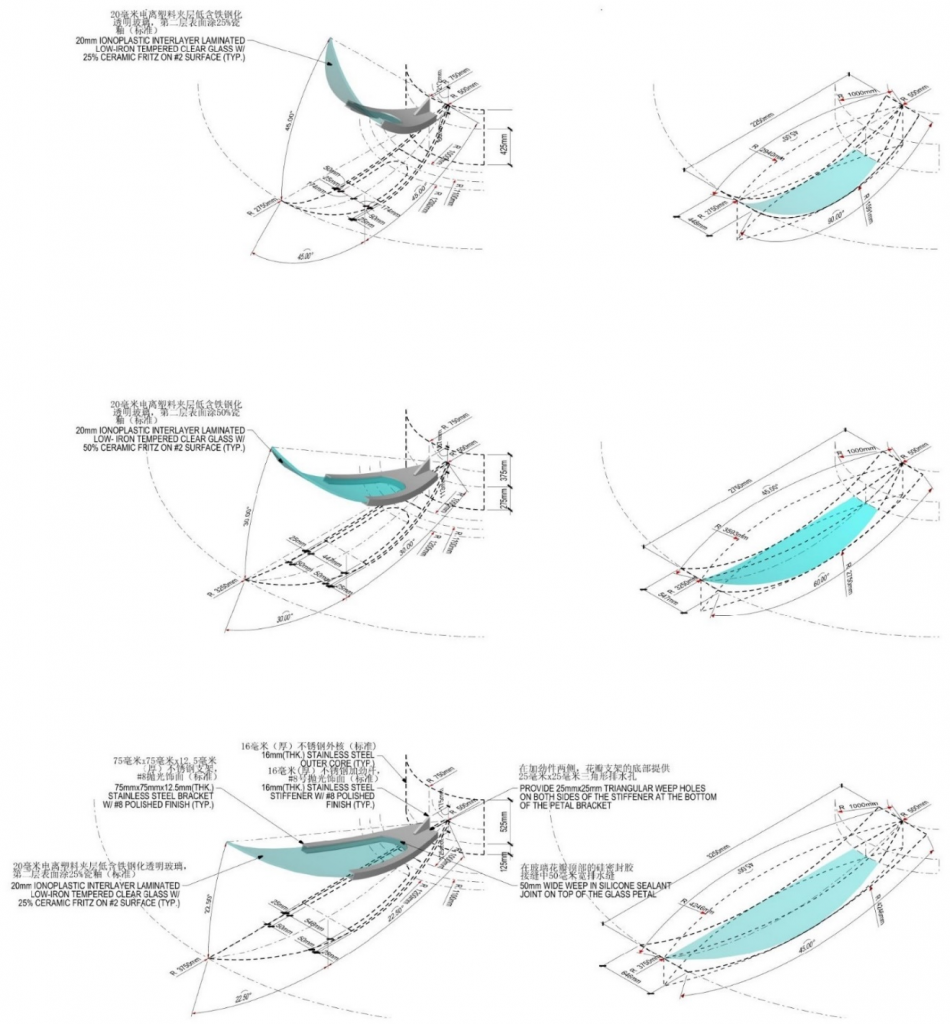
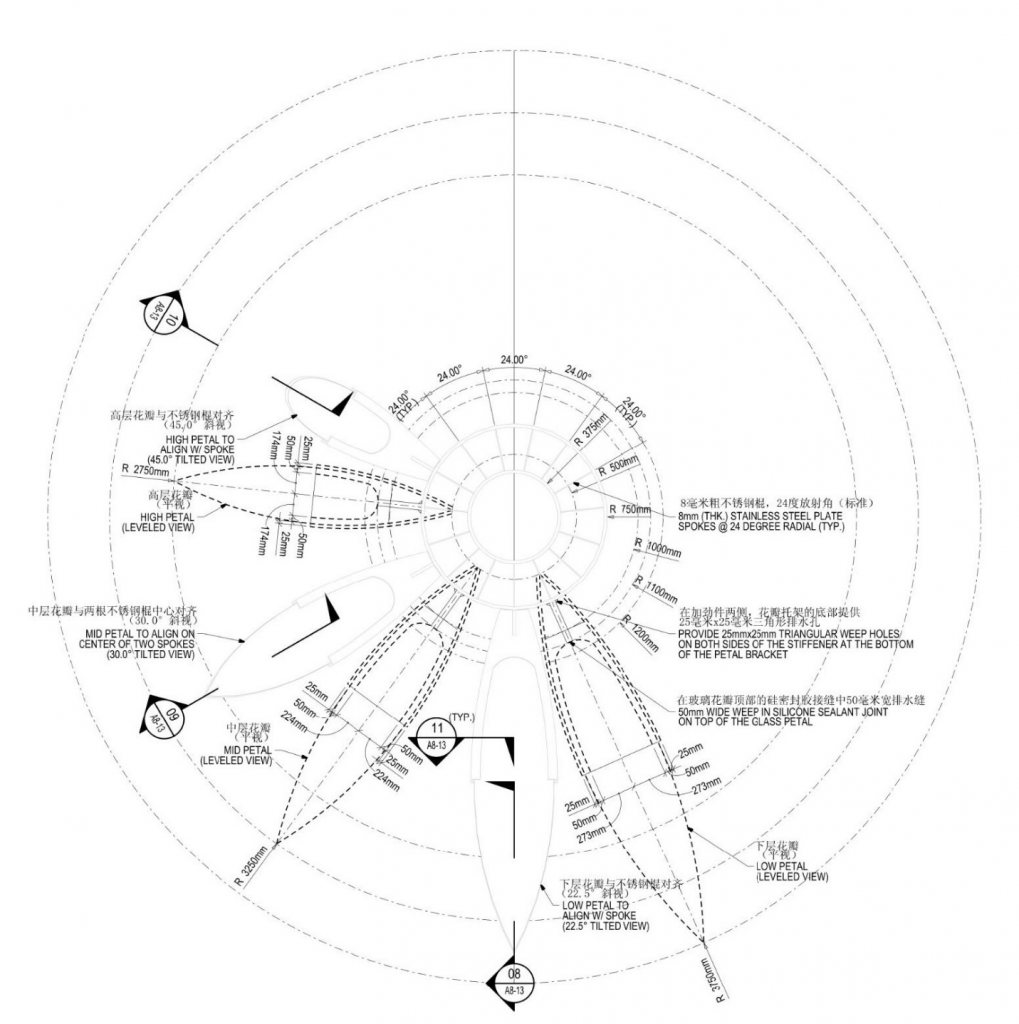
To ensure the “Lotus” looks great in both the daytime and the nighttime, a ceramic fritz dots pattern was added on the #2 surface of the glass to reflect the lights in the night.
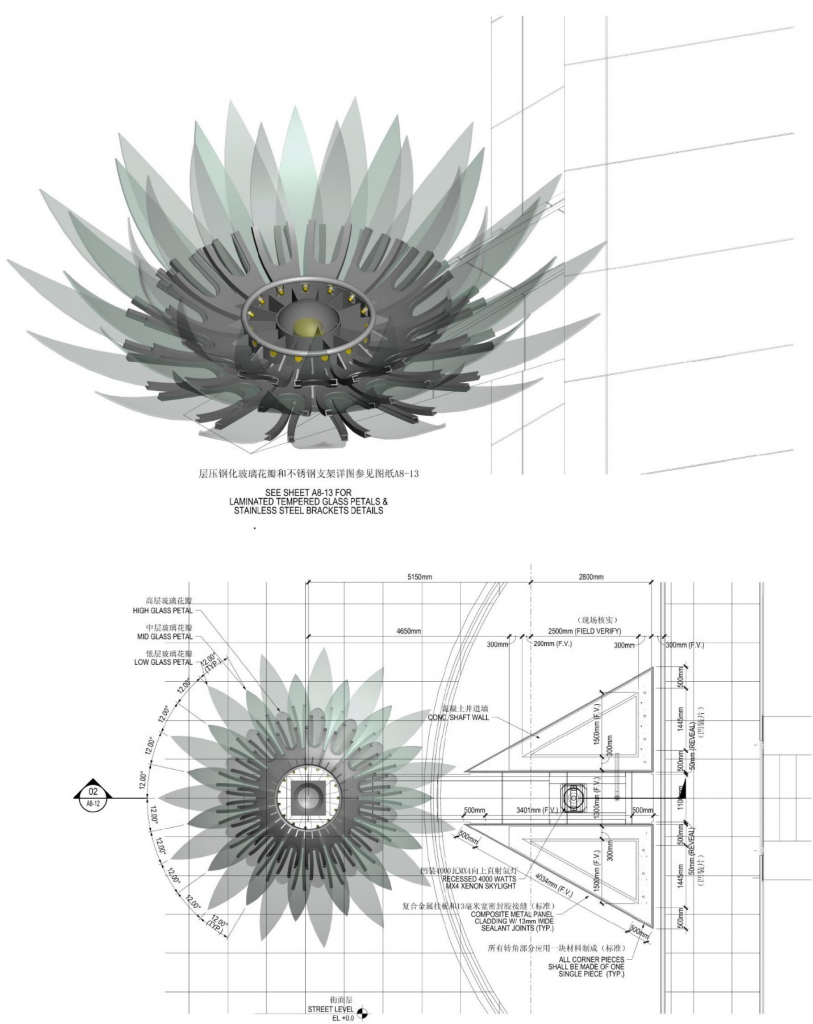
It turns out the “Lotus” not only stands out in the day but also has a very dramatic look at night. The night shot of “lotus” becomes one of Portman’s most popular New Year Card.
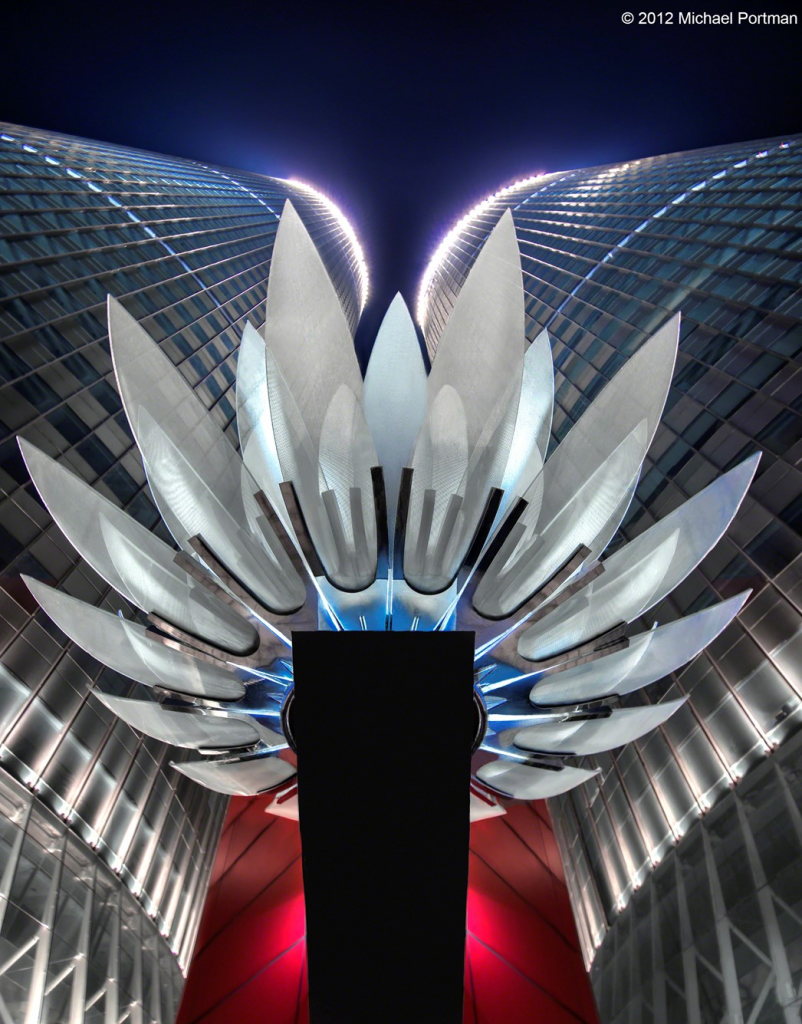
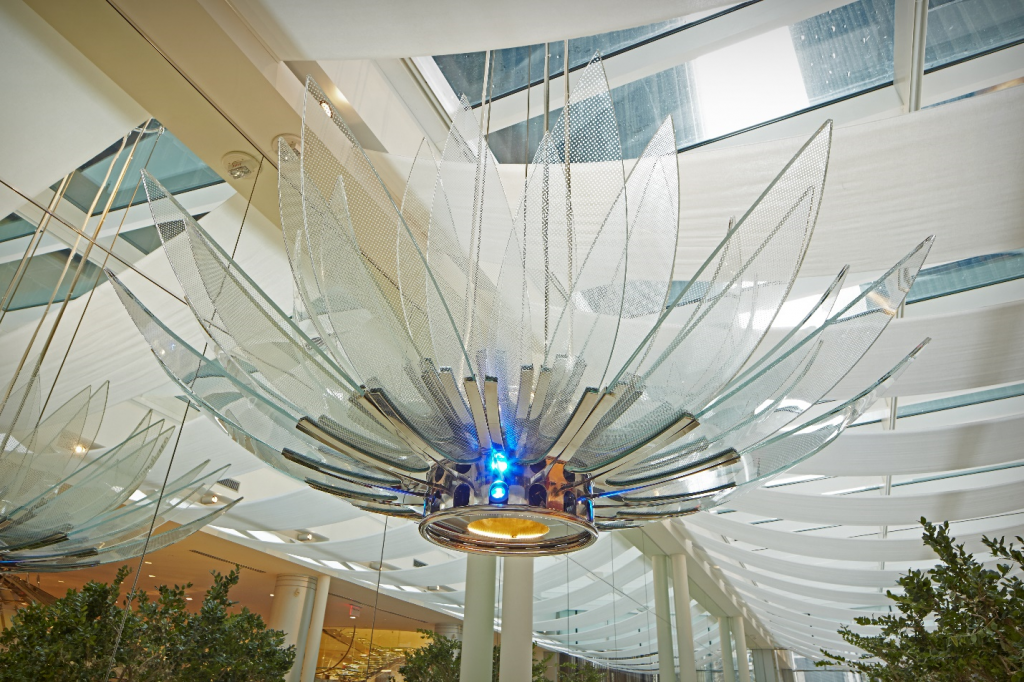
“The Lotus” for Peachtree 230 Indigo Hotel
When we worked on the transformation of part of the Peachtree 230 office towers into an Indigo Hotel, Mr. Portman asked me to re-produce the glass lotus and hang it from the skylight, on the intersection of two axles; one front the new entrance of Americans Mart, and the other to the hotel bar.
Although this re-produced indoor piece is much smaller, about one-third of the previous outdoor one in diameter, however, it has its own set of challenges. First, it is hung from only one skylight rafter that required a steel tube reinforcement during the installation of the skylight. Secondly, the wiring of the lights inside the flower core was not easy. There are many lights (3 kinds of lights) and the associated large drivers need to fit in a tiny space. An electrical contractor was brought to the fabricator’s shop in Miami to install and wire all the lighting fixtures before glass petals were installed. After its completion, Atlanta Homes & Lifestyles magazine put the photo on their cover and called it: “Crown Jewel” of Peachtree 230 Indigo Hotel.

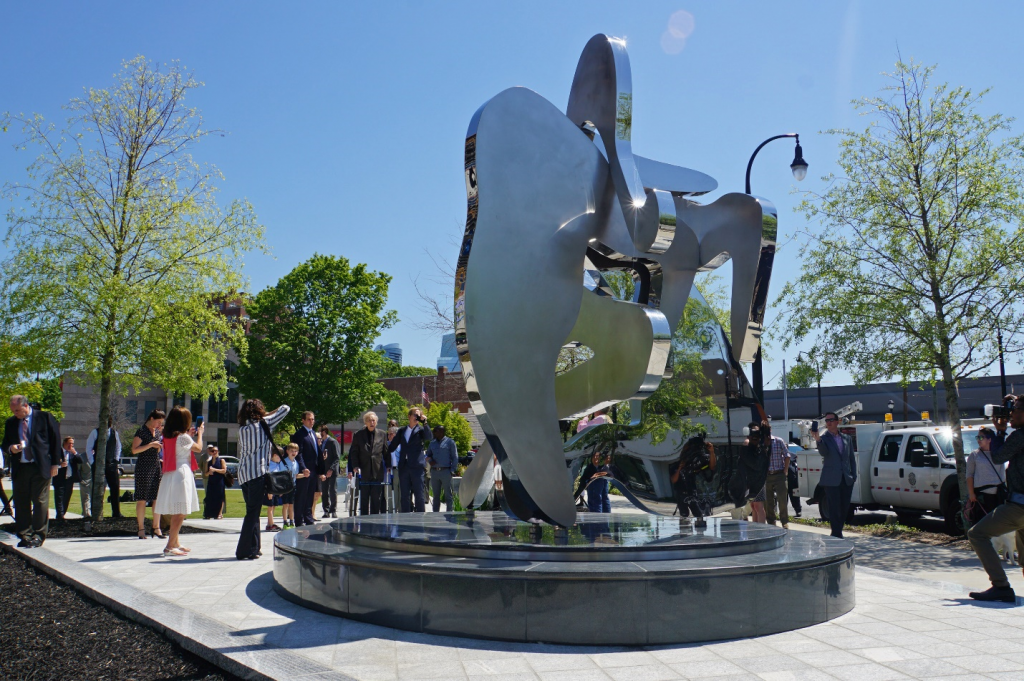
The Loudermilk Sculpture in Atlanta
In his late years, Mr. Portman was invited by the City of Atlanta to design a public art in Loudermilk Park located at a corner surrounded by three major roads. The name of the sculpture is “Untitled”, and it is composed of 4 abstract-shaped parts, that joyfully hold together. The sculpture is fabricated from stainless steel plates, yet with subtle play of finishes.
Three of the extruded shapes adopt satin finish on large faces and polished finish on the side to create a floating effect; yet the middle piece uses polished finish on all faces, acting as a mirror to reflect the other three and the surrounding. The sculpture was created at a small scale in the study phase and later made to the real size in the workshop.
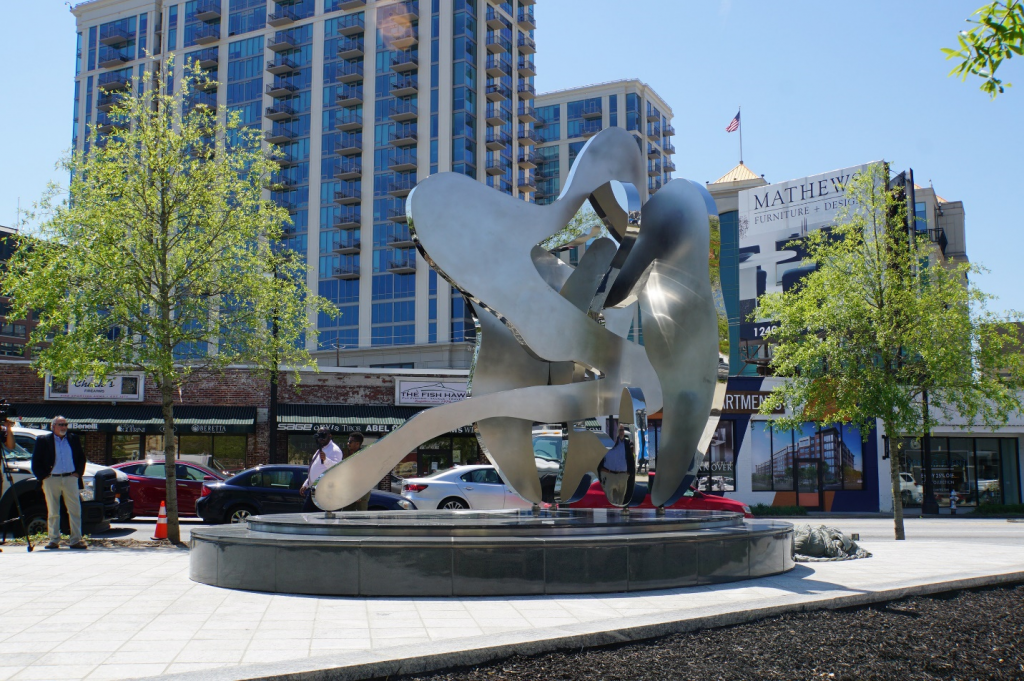
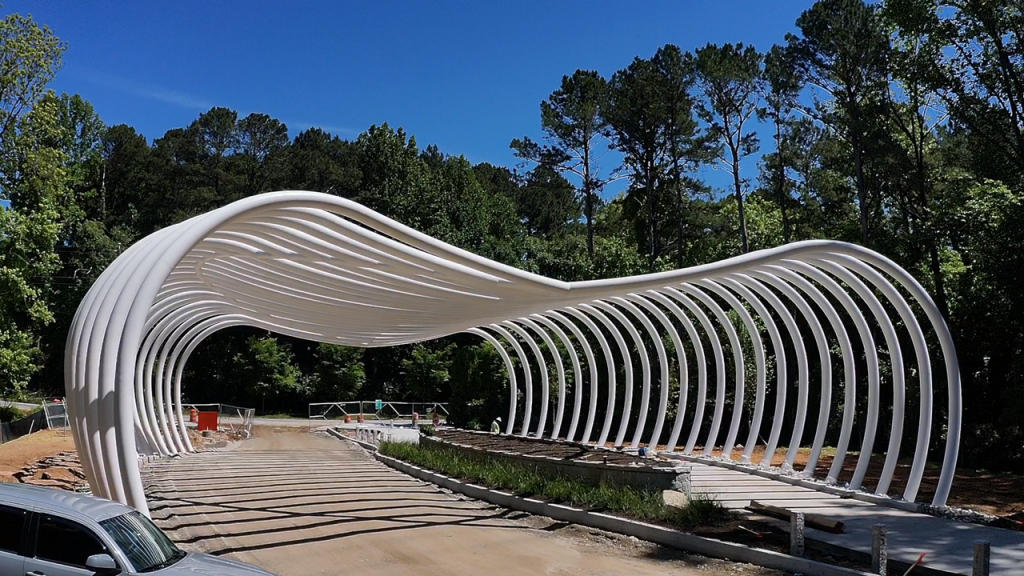
Gateway for Atlanta Bellwood Quarry Park
Bellwood Quarry Park was an abandoned granite quarry that the City of Atlanta redeveloped. It later became a reservoir to supply drinking water for the entire city for up to 4 months, and the surrounding area was turned into a public park. The city of Atlanta asked Portman to design two entry gateways on the westside and the east side of the park. A wavy animal ribs alike form was developed to welcome visitors, and the depth of the gateway would give the visitors a good drive-through experience.
To bring down construction cost, we had to reduce the size and simplify the different rib into the same form and placed them at different elevations to make them appear variant.
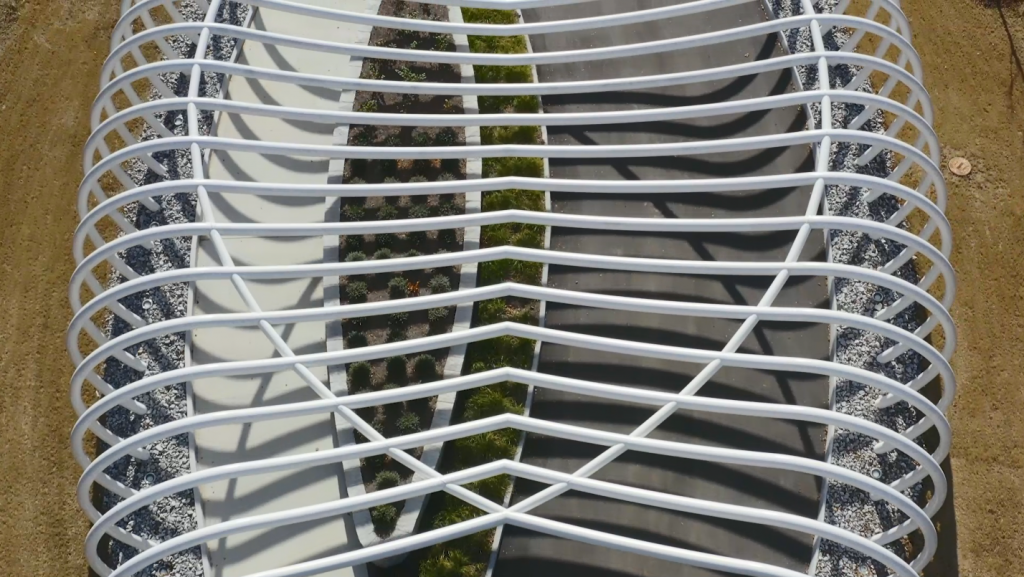
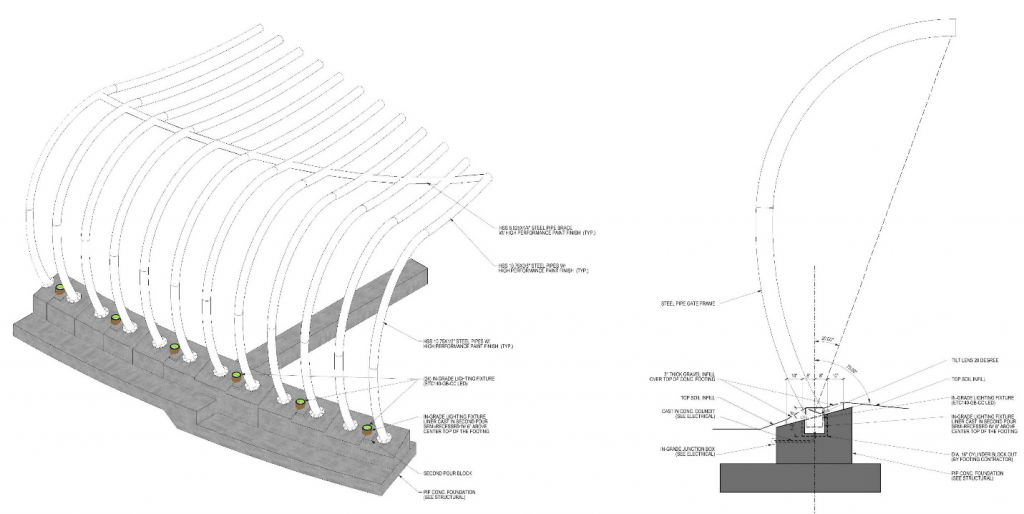
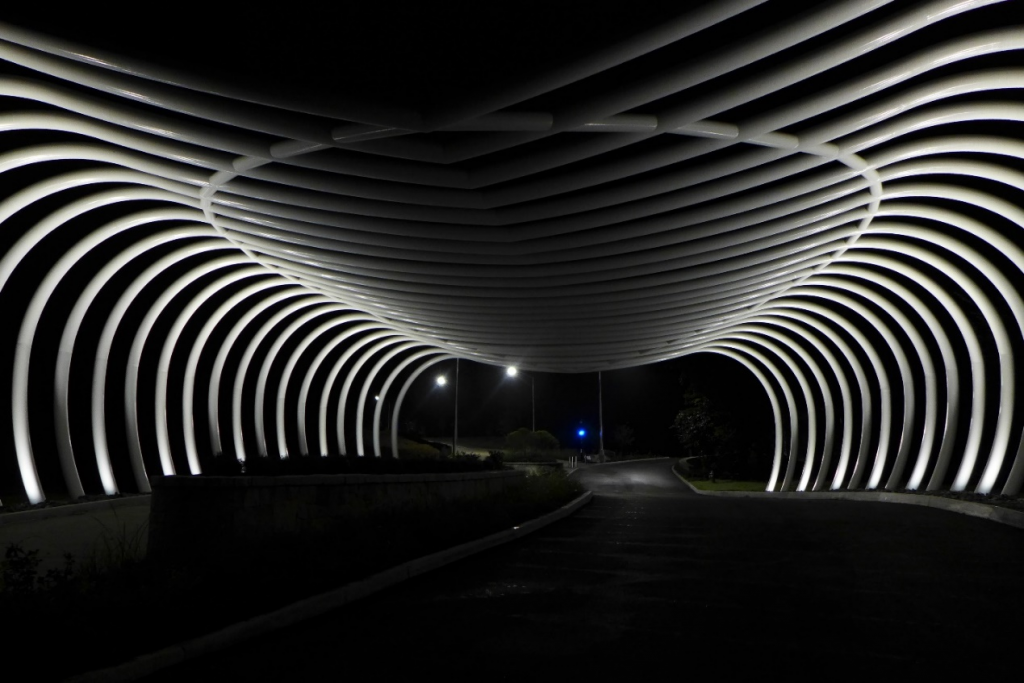
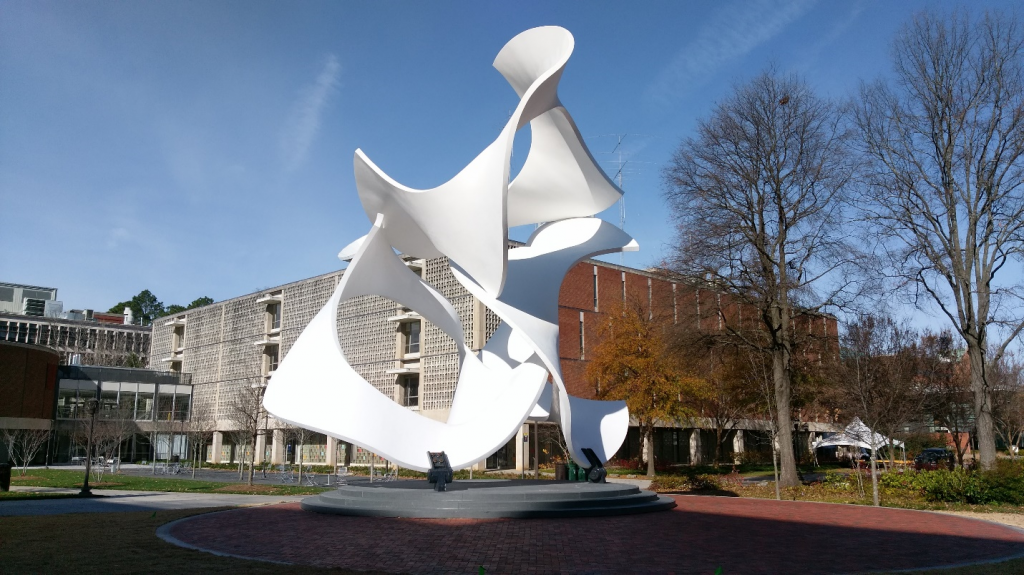
KOAN in Georgia Institute of Technology
KOAN sculpture was Mr. Portman’s last sculpture masterpiece, recently completed and installed in the Georgia Tech campus, beside the buildings of the College of Design, formerly the School of Architecture where Mr. Portman graduated from. The sculpture is composed of three identical orbs, representing Knowledge, Research, and Creativity, with all of three combined that comes up enlightenment.
Because of the thin shell and the twisted shape, there is no traditional material that can be utilized to make this sculpture. After searching for many passible fabricators, one of them suggested using carbon fiber, the hi-tech material used in Boeing 787 Streamliner, and powerful wind turbine blades. But the next question comes, how to determine the wind load for structure analysis? An ordinary wind tunnel test was not feasible, due to the size required to insert all the sensors inside the body, which would need a very large 3D printer. Finally, we went to Georgia Tech School of Aerospace Engineering for help. They were able to use a supercomputer to run a virtual dynamic wind load test, and based on that information, structural analysis and calculation were done to find out the structural design criteria, so that a structural system can be properly designed to withstand the forces.
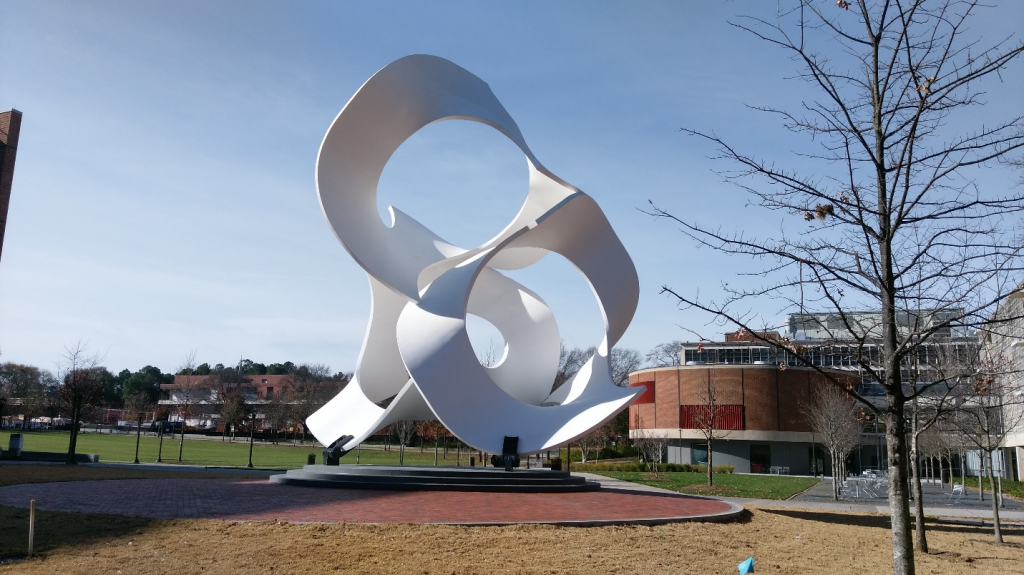

Then the next question comes: who can make it? It took an “out of the box” thinking for us to find a speed boat builder in Augusta, Georgia. With his expertise to build the complex ship hull with carbon fiber material and his adventurous spirit “To boldly go where no man has gone before!” he took the challenge. Each orb was made of 4 identical parts. To keep the parts structurally integrated, the joints were heavily reinforced. And the joints between each orb were very complicated and have to be precise, which required a CAM machine to cut out the templates during the formation. The whole process took almost three years.
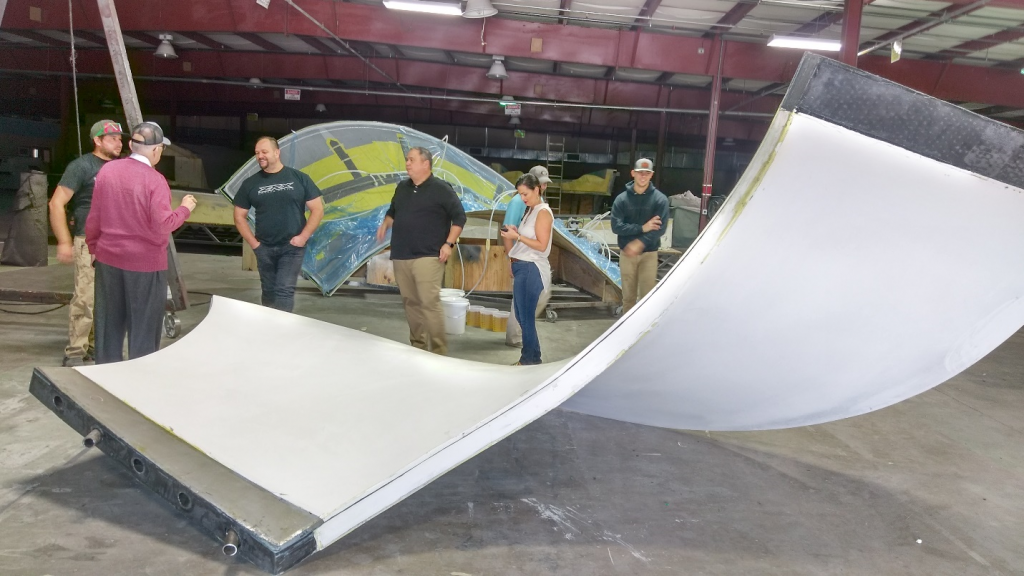
The sculpture was recently installed on the Georgia Tech campus and has quickly become the symbol of this top Engineering university in the US.
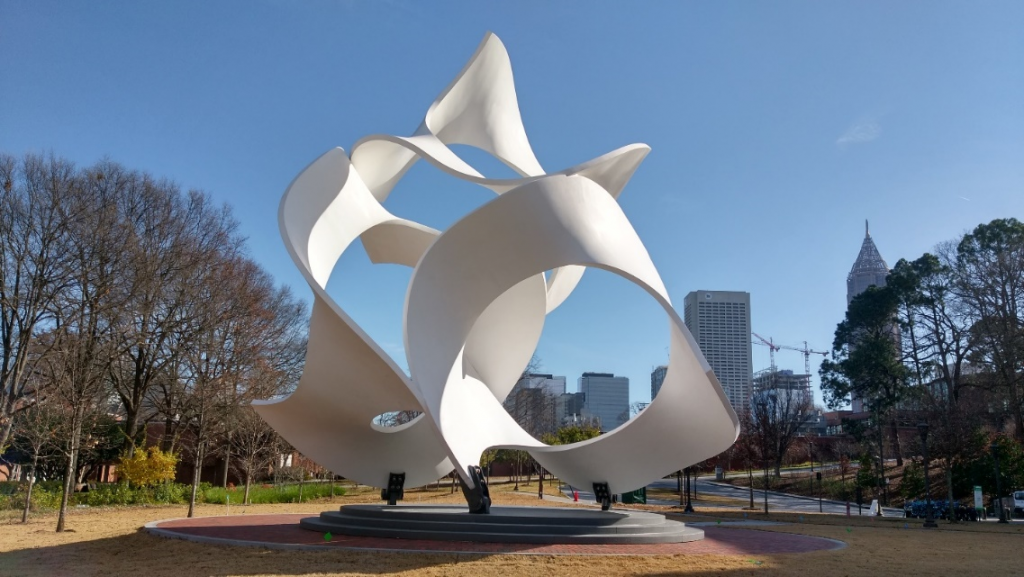

Ending
Portman sculptures are art pieces themselves. They are designed to bring art close to life and to create a memorable experience for the users. “Connecting with art, whether viewing a painting, hearing a fine symphony or participating in artistic expression yourself, allows you to get to the core of who you are, which inevitably shapes how you see the world and how you create solutions for the world around you.” – Mr. Portman. In our next Portman element series, we will cover “the story behind Portman monumental stairs”.
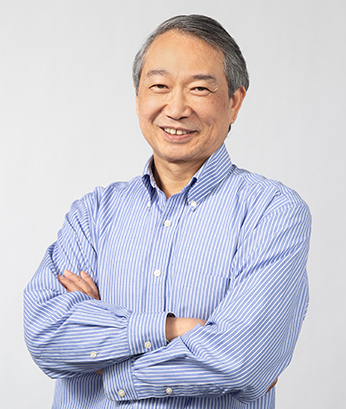
Practicing since 1978, Steve has demonstrated his excellence in building design and construction. His skill is focusing in on details and coordinating all related trades in order to successfully integrate building components together.
Throughout the years he’s repeatedly shown his ability to understand different building materials and the requirements of the project, all while being sensitive to the design issues. Through hands-on, in-the-field construction administration, Steve’s gained experience on a wide range of building types and construction technologies. This has included design, master planning and project management, with responsibilities for complete project coordination through tenant move-in.
